Lalibela is a town in Ethiopia famous for its medieval rock-cut monolithic churches. Cut from solid rock some of the churches are more than 10 meters tall. It is hard to imagine how much effort it required to excavate these churches and decorate them. No wonder a legend says that the churches were built with the help of angels overnight. Another story goes that the power of the Arc of covenant (still believed to be in Ethiopia by many) was used to help excavate the churches.
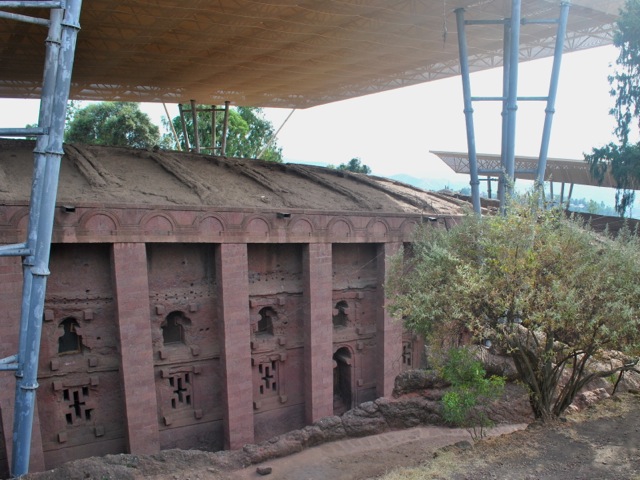
Modern historians say that the churches were build over a long period of time between 7th to 13th century AD. The churches are a UNESCO World Heritage site and most of them now are covered with roofs for protection against the elements. All the churches are still functioning and are the center for pilgrims especially during major Ethiopian Orthodox Church religious holidays. We visited in November 2017 and there were few tourists.
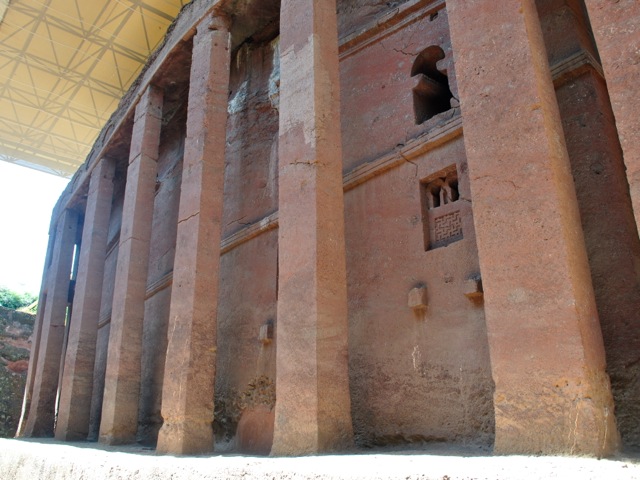
Each of the churches was carved out of the mountain first. Then windows and doors would be carved and then the entire interior with columns and variety of decorative elements. The interior then was painted with most churches having very impressive paintwork on ceilings.
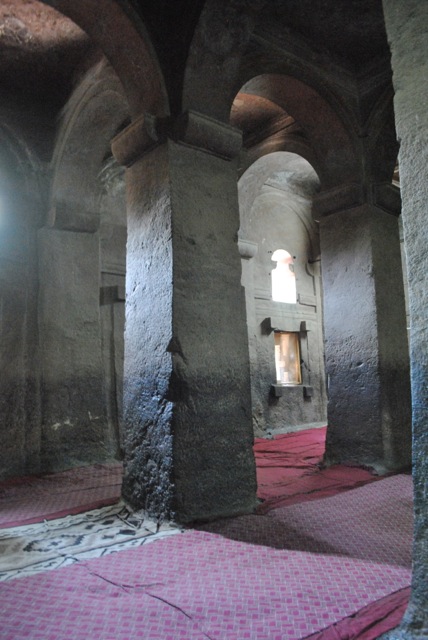

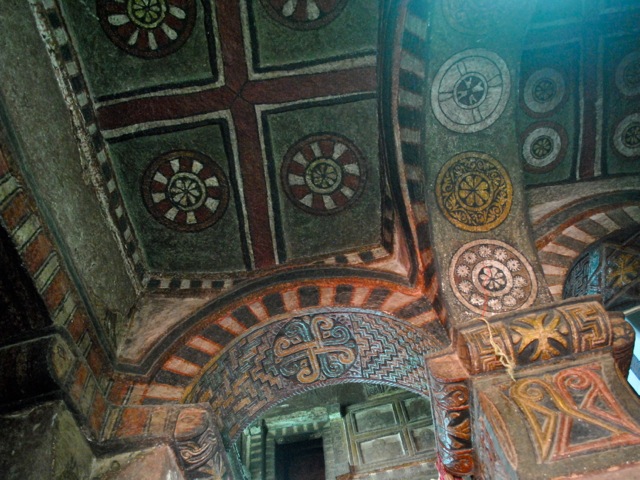
As we wondered around the churches we saw several monks and hermits who emerge from their cells for some light and warmth.
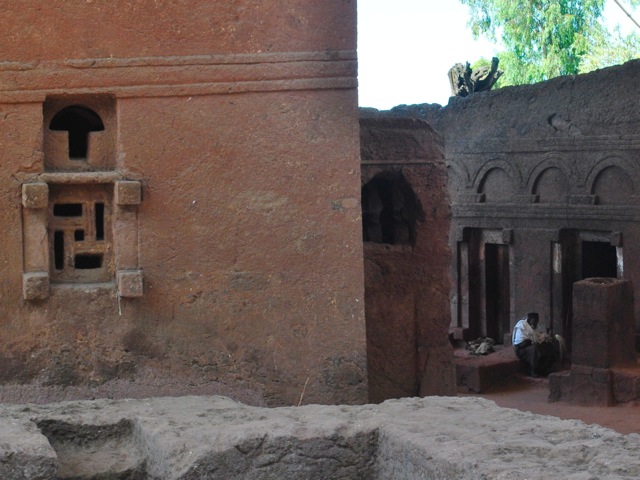
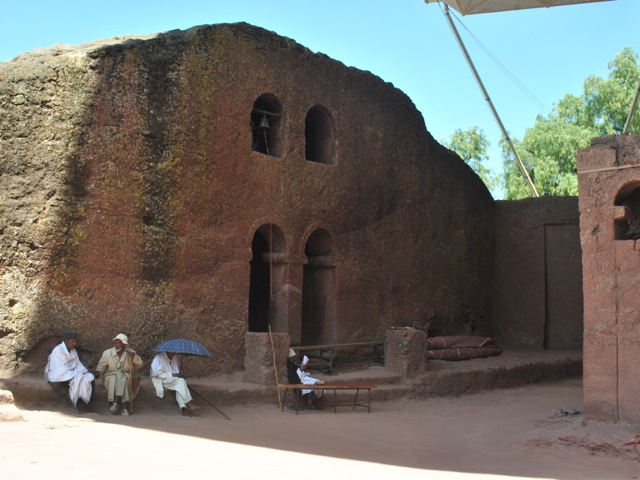
The churches are clustered in northern and southern cluster and Bet Giyorgis – the most famous cross-shaped church – is standing on its own. We arrived to Lalibela on the morning direct flight from Addis Ababa and after dropping the bags to the hotel went straight to visit the northern cluster. The churches close between noon and 2 pm so we headed back to the hotel for lunch. In the afternoon we did the southern cluster and St. Georgis which is particularly striking at sunset.
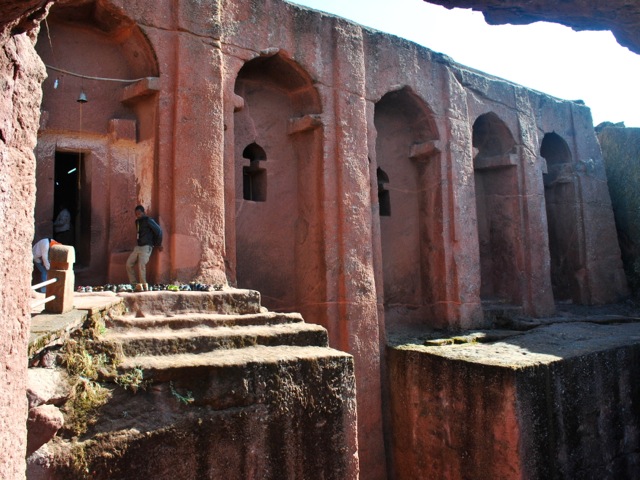
Bet Giyorgis dedicated to St. George is the only church in Lalibela that does not have a protective cover over it. It is the most recognizable of all Lalibela churches and is particularly popular in low afternoon sun.
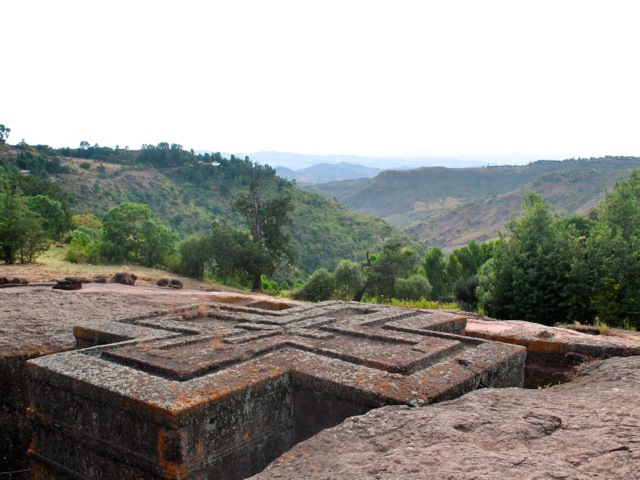
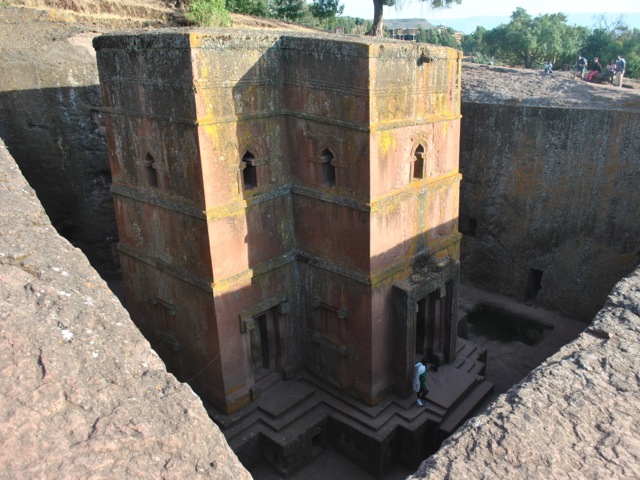
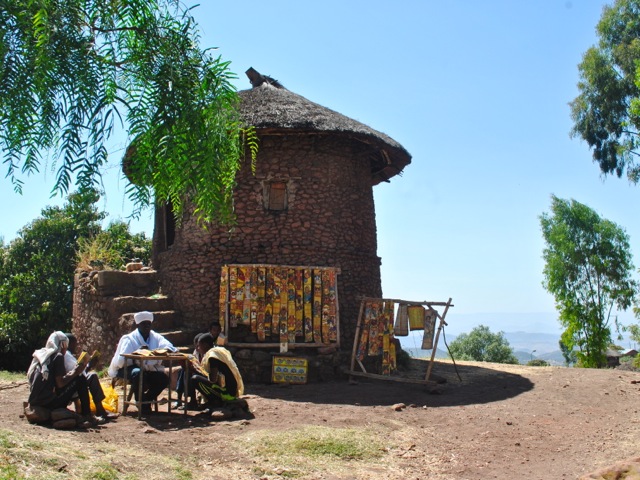
The town of Lalibela has a population of about 30 thousand. It sits on a small plateau at an altitude of 2,600 meters with stunning views of the valleys and mountains around.
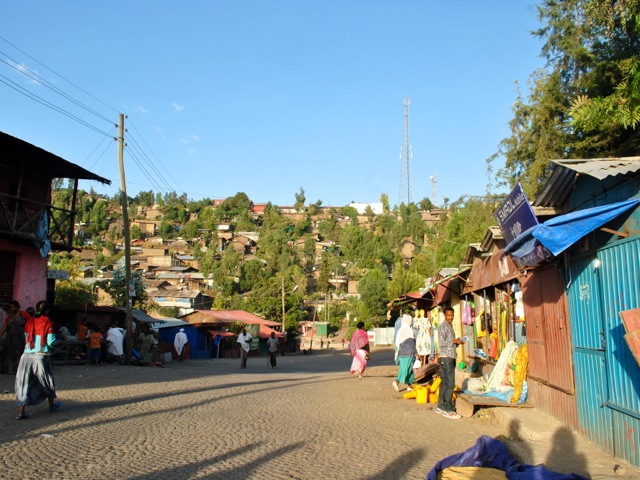
To get a good view of the landscape we headed for dinner to Ben Abeba restaurant. Ran by a Scottish-Ethiopian duo the name of the restaurant means mountain flower – ben being mountain in Gaelic and abeba – flower in Amharic. The structure looks odd but it does have excellent sitting to enjoy stunning views and sundowner in one of the “flower pods”. Once the sun set though it got pretty cold and eating inside was definitely the way to go. In the spirit of Scottish-Ethiopian fusion we got a shiro shepherd’s pie for dinner – basically a shepherd’s pie with Ethiopian traditional shiro (chickpea stew) inside.

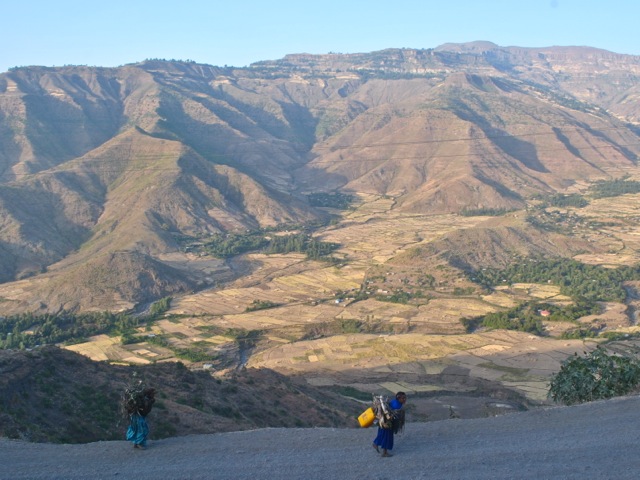
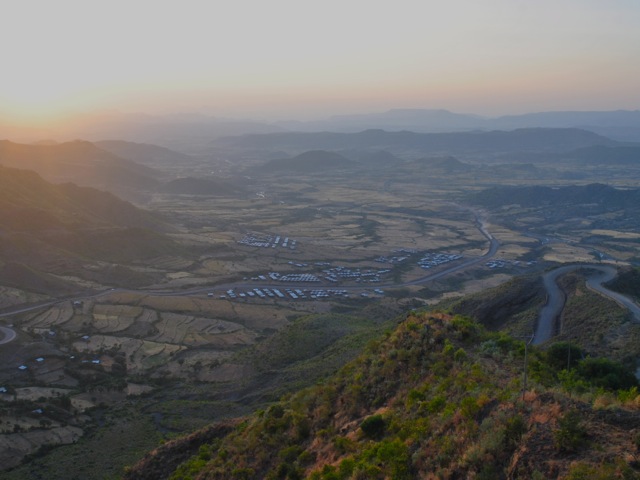
The next day we headed to Yemrehanna Kristos monastery. The trip starts with a descent from Lalibela town to the valley with stunning views on the way. In November when we visited all the fields were bright yellow with grains ready for harvesting. As we drove through the countryside we saw lots of farmers in the fields threshing grains. We travelled on Saturday and so also saw lots of people walking along the road to the market.

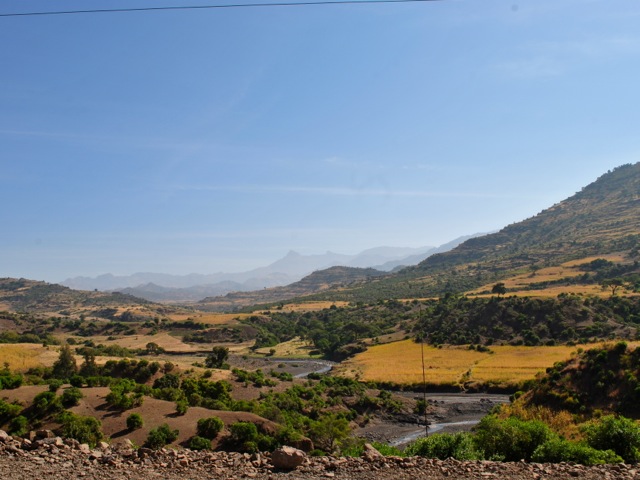
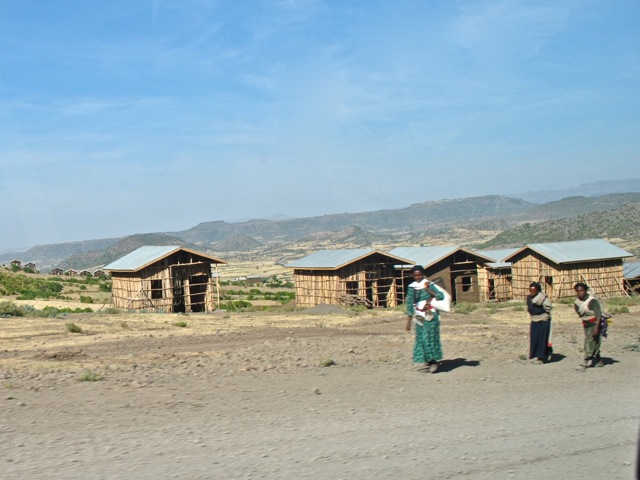
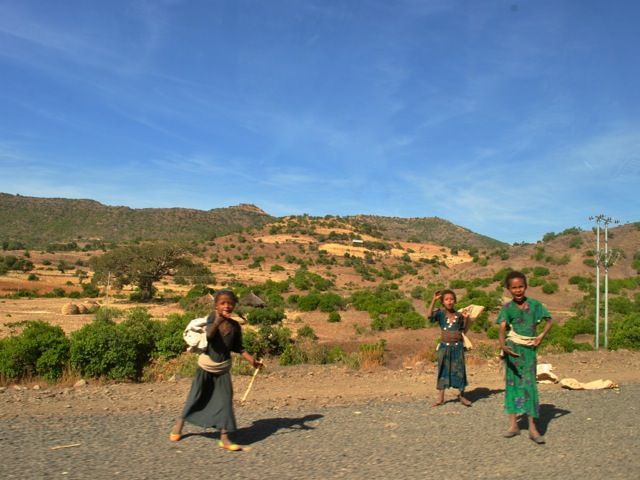
The road from Lalibela to Sekota that took us to the monastry was in the process of being paved at the time of the visit. About half way to the monastery the very nice freshly paved road turned into a gravel road. The trip definitely needed a 4×4 and in rainy season would be quite a track.
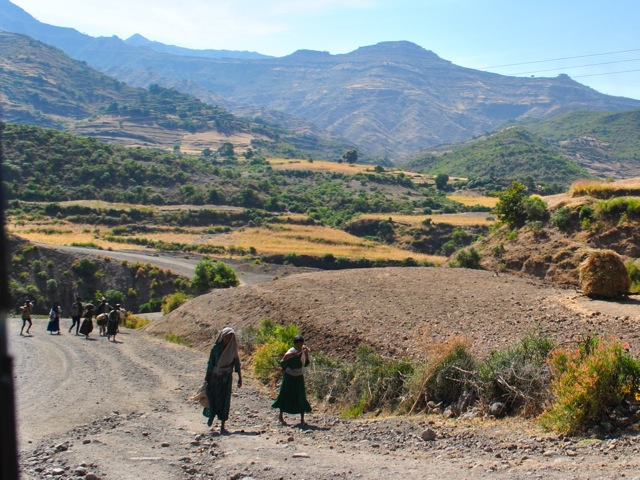
The monastery is located in a cave on top of the hill. There was a nice concreted path leading up to the cave through a beautiful forest with blooming flowers. In Ethiopia churches are protecting forests. Areas belonging to church often are the only places where any forested land is left as people in surrounding areas plow hilltops to plant grains.
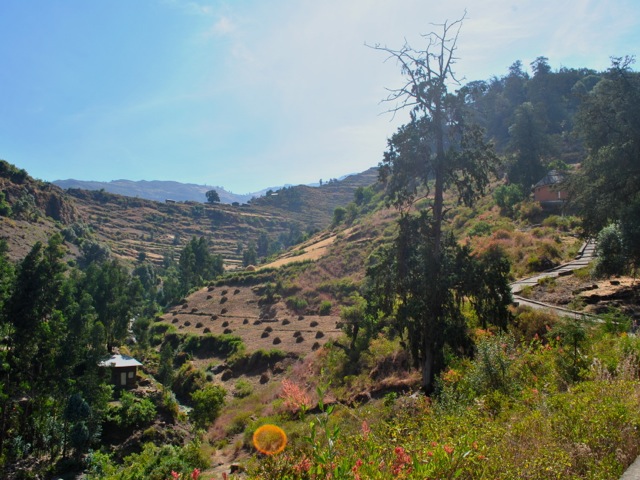
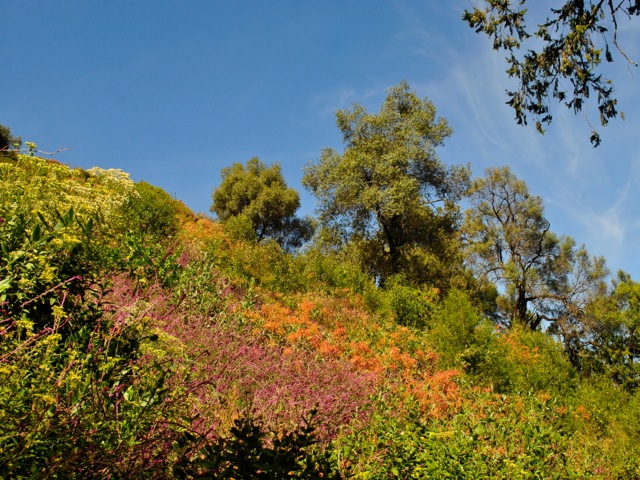
At the top of the hill there was the entrance to the cave where monastery was. The modern protective wall unfortunately did not follow the old elaborate architectural tradition that inspired the monastery inside. You have to take off shoes at the entrance of all churches and monasteries so wearing socks is a good idea.
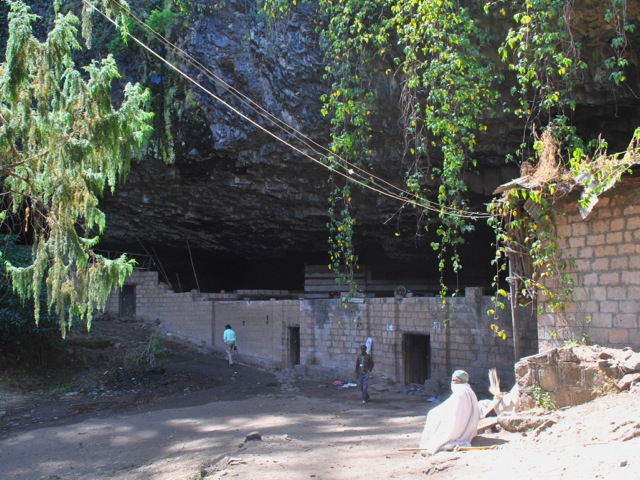
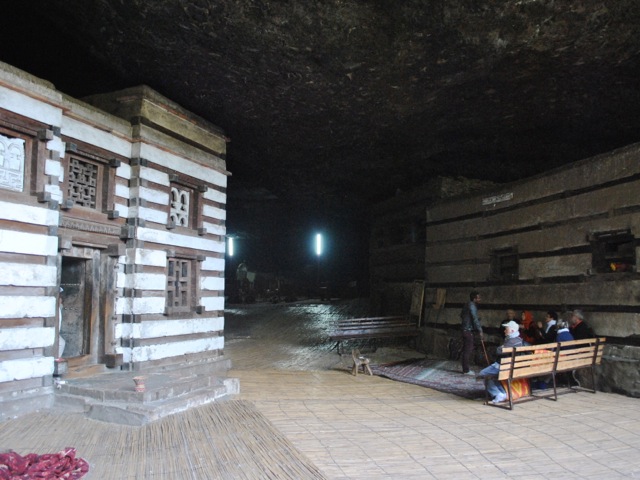
The buildings inside of the cave are built in Axumite style with wood and rock. The main church has elaborately carved windows and finely painted interior. In the back of the cave there is an area full with mummified bodies of more than 10 thousand pilgrims who came to the monastery to die as it is a holy place.
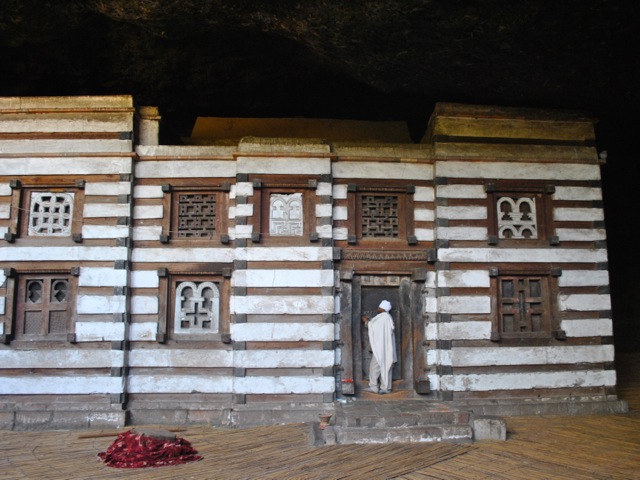
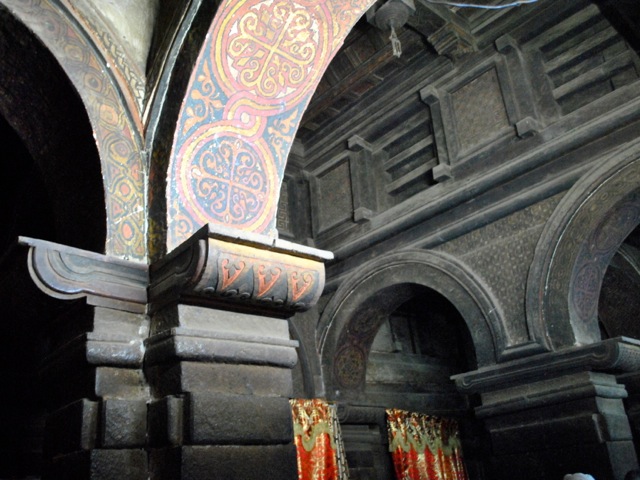
On the way back we stopped and had a coffee in a little coffee shop at the parking area. The setup is very basic with a half a dozen shops in mostly corrugated iron boxes selling souvenirs.
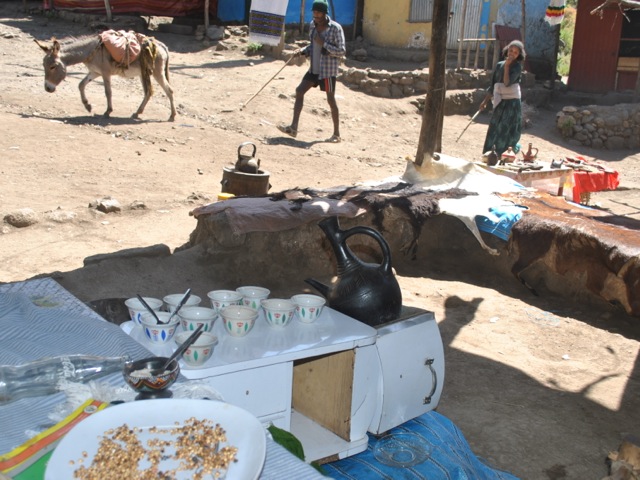
We headed back to Lalibela passing more harvest scenery along the way. There is a very nice view on the way of the striking hill on top of which Lalibela town is perched. One can understand why the builders of the churches selected this spot providing ample protection from attackers back in the day.
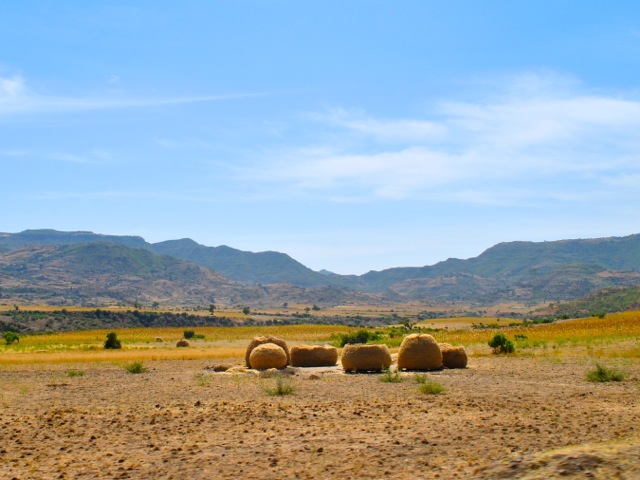
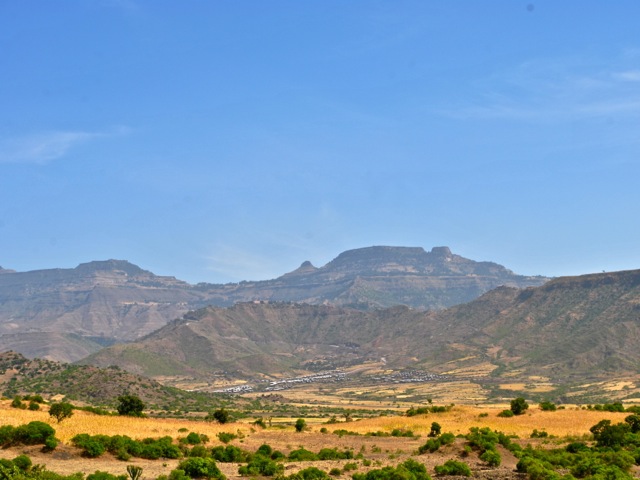
Our next activity was a visit to the market in Lalibela. On the way to the market we passed a very impressive looking structure. We thought it was some sort of luxury new hotel being built with cascading pools but were told that this was a new honey museum – area being famous for its honey. The building was not finished at the time we visited but we wonder what came out of it and what would be in that massive honey museum.
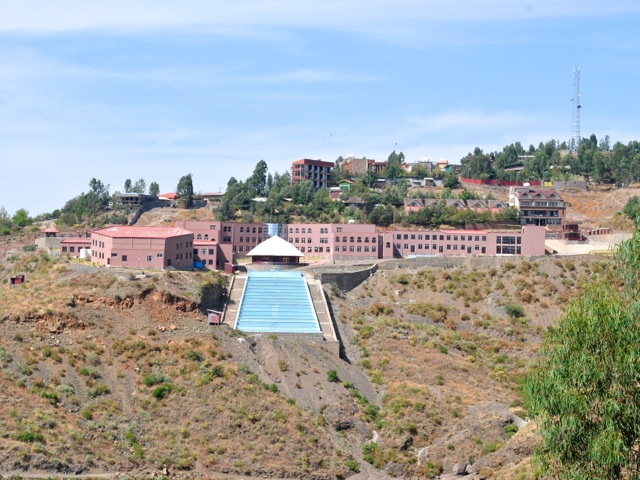
The market was colorful and chaotic. We arrived a bit late for the main action and most of the cattle was gone. But there were still many traders mostly women selling salt, honey, grains, spices, vegetables and all sorts of housewares.

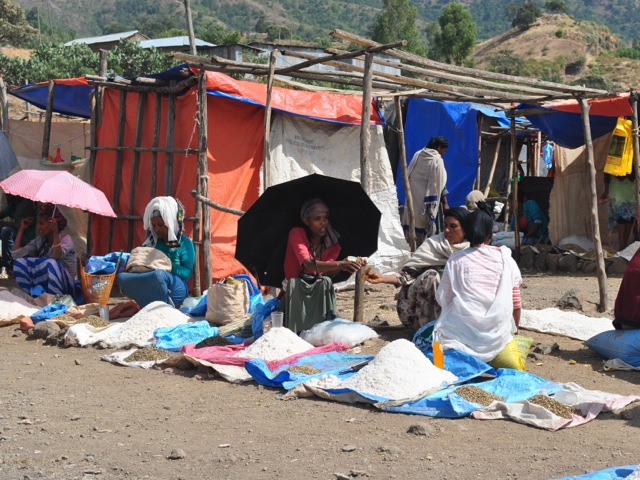

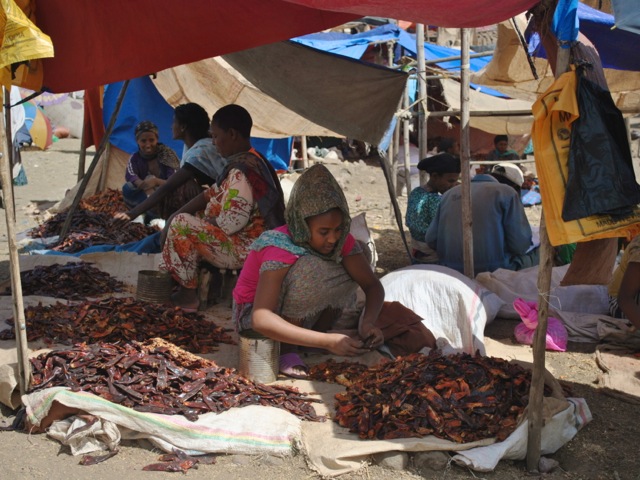
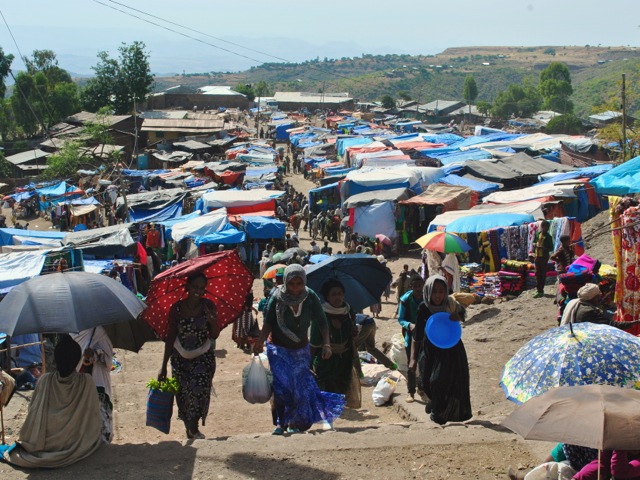
For our second day sunset viewing we stayed in our hotel – Sora lodge. It was perfect not only for the sunset but also for excellent bird viewing.

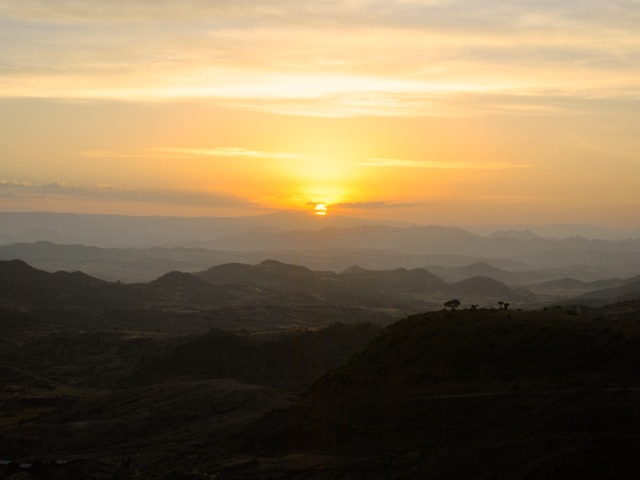
The next day Sunday was our day to go back to Addis Ababa. The latest direct flight to Addis Ababa goes at 1pm which leaves limited time for doing more tours. We decided to just stay at the lodge and watch birds and people going up and down the steep hills. We saw some really cool eagles and kites and even a lammergeier. Lammergeier or bearded vulture is the only bird specie that feeds on bone marrow. It extracts it by taking the bones of dead animals, flying up to 150m high and then dropping the bones so they crash and crack. The old name for the bird – ossifrage- literally means bone breaker. We also saw one in action in Semien mountains though on both occasions it was hard to get a good picture of them in flight.
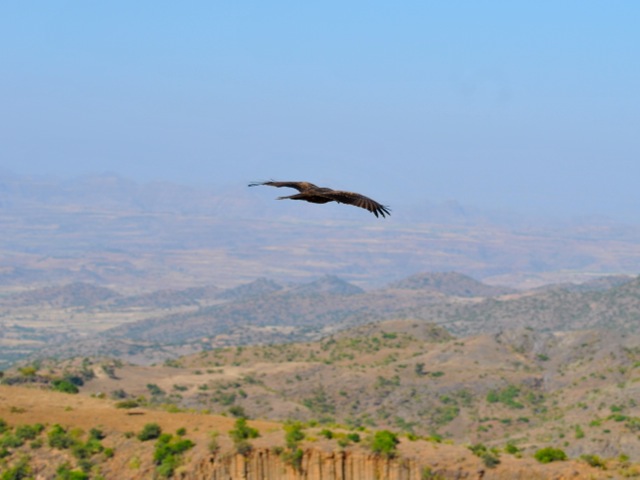
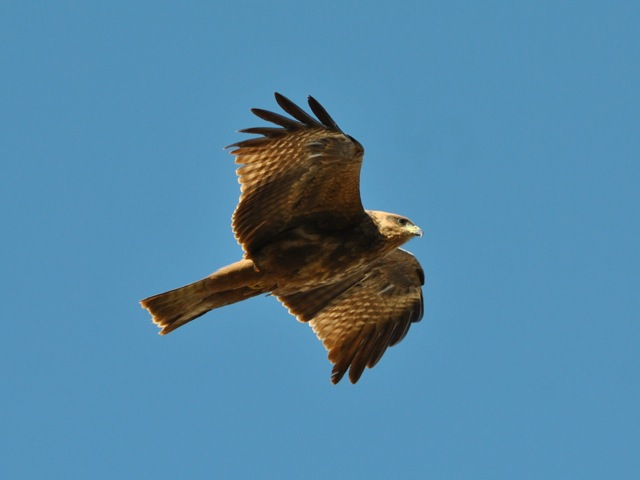
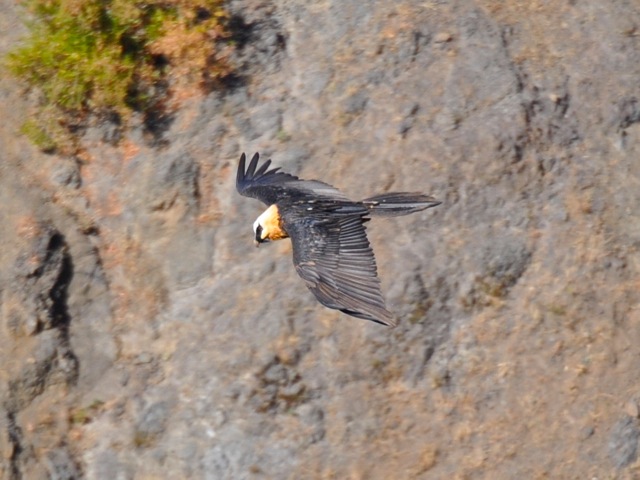

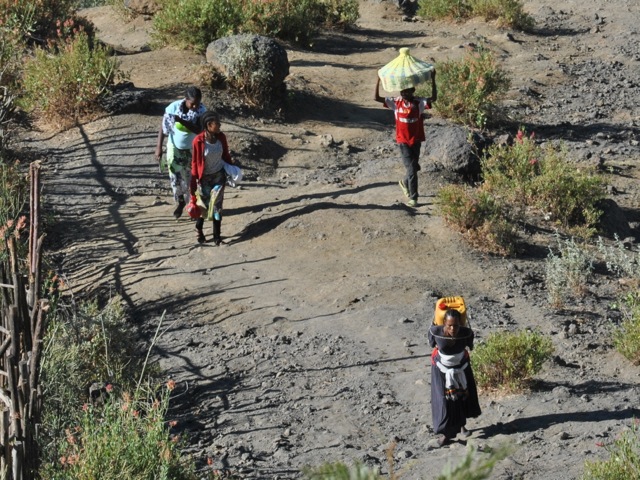
Lalibela is a unique place with amazing history and spectacular landscapes. At a minimum it can be done on a weekend trip from Addis Ababa. If one has more time, tracking tours with Lalibela and surroundings sound very interesting. Tesfa tours does community tracking and we heard good feedback but did not have a chance to try – hiking at high altitude is no mean fit though. Many tours offer Lalibela trips as part of the so-called Northern circuit which depending on the operator includes Bahir Dar with Lake Tana and Blue Nile falls, Gonder and Simien Mountains, and Axum.
